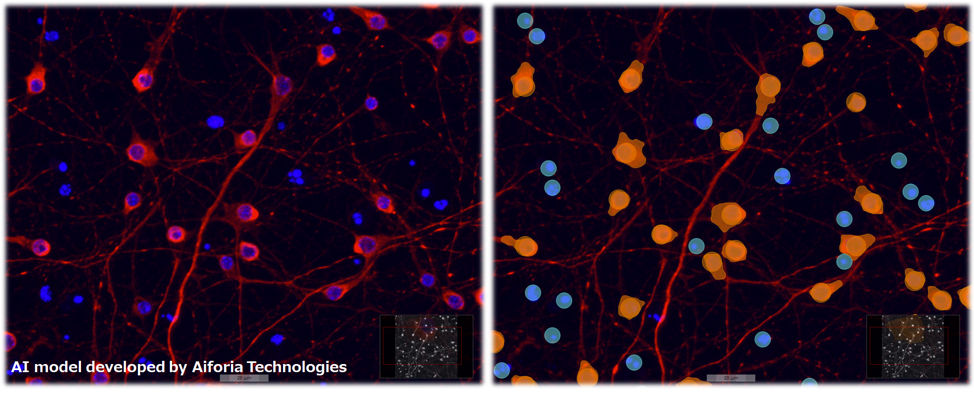What is Artificial Intelligence?
Many of us think of artificial intelligence (or AI) as a robot with human cognitive abilities. Many civilizations have created realistic humanoid automata, usually statues that would perform human-like movements and were believed to have human minds. Stories of artificial beings from ancient Greek and Norse mythology have been spun into pop-culture science fiction tales. When present-day fictions and genuine developments in technology are intertwined, the line of truth is easily blurred.
Is artificial intelligence real? Does it exist today?
In the 1950s, with the discovery that neurons in the brain operate on electrical firing and wiring principles, there was great enthusiasm for creating an electronic brain and confidence that it would work like our own. Computer scientists, neuroscientists, physicists and others began intensely searching for the key to artificial intelligence. Over the next few decades it became clear that the human brain is far more complex than it seemed in those early studies. The simple reality is that the human brain is still far from being replicated by a machine. So the idea of a walking, talking robot that is nearly indistinguishable from a living human is definitely not real ... yet.
However, artificial intelligence is indeed real and is being used all the time!
Even as scientists realized that the whole human brain couldn’t be replicated by a machine, they found that they could create expert systems that could do just one thing really well. Our computers can not only do repetitive and complicated calculations for us, but have programs that can also learn from our inputs to solve word problems. They can even adapt and change. Here are some examples. When we make a wrong turn, the GPS software recalculates to navigate a new best route. It may even incorporate new information that other users supply about an accident or speed trap. Another example is as we enter a few letters into a search engine, the search engine begins to reveal results based on what you and others have searched recently with similar combinations of letters. And one final example is when we point our camera at something, it identifies foreground and background in order to autofocus, yielding better pictures for many of us.

Representative images of neuronal cell cultures labeled with fluorescent stains to identify microtubules (red) and the nucleus (blue). Left: Raw multichannel immunofluorescent image of live neurons in culture. Right: the same image analyzed with an artificial neural network designed to detect all living cells (orange) and dead cells (blue circles).
There are several famous computers that mark advances in AI, where they achieve a level of adaptive thought that surpasses human experts, such as IBM’s Deep Blue (chess) and Watson (Jeopardy!) but most innovations aren’t really famous. AI technology has quietly advanced every field, from banking software to medical diagnostics to operating machinery in a variety of industries.
Today, scientists who study and innovate artificial intelligence are exploring questions in big data and deep learning. Big data research involves finding meaningful information in huge, cross-disciplinary datasets. Deep learning is a complex form of machine learning used to accomplish more involved “thinking” tasks, like playing a video game designed for a human.
Some scientists are looking into artificial general intelligence, the idea of a machine that can solve not just one problem but any problem, more like a human. So perhaps someday we might have a conscious robot working next to us, but for now it remains science fiction!
As described above, artificial intelligence (AI computer algorithms that learn from experience) assists us in several everyday tasks such as quick-replying to an email and recognizing our face to unlock our cell phones. But did you know it is also being used to assist scientists in making world-changing discoveries?!
We featured three scientists who use AI in their research on a recent panel discussion during the Museum’s weekly Lunch Break Science. Watch our conversation to learn more about AI in the fields of weather prediction (Dr. Maria Molina), predictive policing (Dr. Ariel Ludwig) and energy efficiency (Lewis LaBrie).
In an interesting twist, while scientists are learning to make an artificial brain, artificial intelligence is helping us study the human brain. We asked neuroscientist Dr. Lindsey Smith from Aiforia Technologies to tell us a bit more about AI in her field.
Q: What is AI?
Dr. Smith: Artificial intelligence is a field of scientific study that aims to enable computers to mimic uniquely human behavior. This could include speech recognition, image recognition and natural language processing. In short, AI is being used to train computers to perform tasks that are cumbersome, time consuming or subject to human error.
Q: How is AI revolutionizing STEM?
Dr. Smith: In the context of scientific discovery, AI is being used all over the world to enable scientists to more quickly and accurately process millions of data points in order to illuminate new cures for diseases, better understand the human brain, make cars safer to drive, help doctors make more accurate diagnoses, fight climate change and much more. Scientists find that using AI-drive technology helps to reduce bias - that is, systematic issues with underlying data like favoring particular types of cars, colors, trees, etc. - in their research and also allows them to make new discoveries at an accelerated rate.
Q: What is an example of AI being used in scientific research?
Dr. Smith: In order to perform neuroscientific research, and because using any animal or human brain is both physically hard to access and potentially hazardous to the owner, many scientists often use neurons grown in a dish (known as cultured neurons) instead. This allows us to better understand how brain cells work and how they respond to various types of diseases and treatments (disease pathologies, inflammation, pharmaceutical drugs, etc.). This approach provides a safe alternative to using animals or humans, and allows researchers to ask scientific questions that are important to discovering disease curing drugs. In this laboratory case, AI can rapidly and without significant bias be used to quantify the number of living or dead neuronal cells in response to various drug treatments, and reduce image analysis time by up to 90%.


